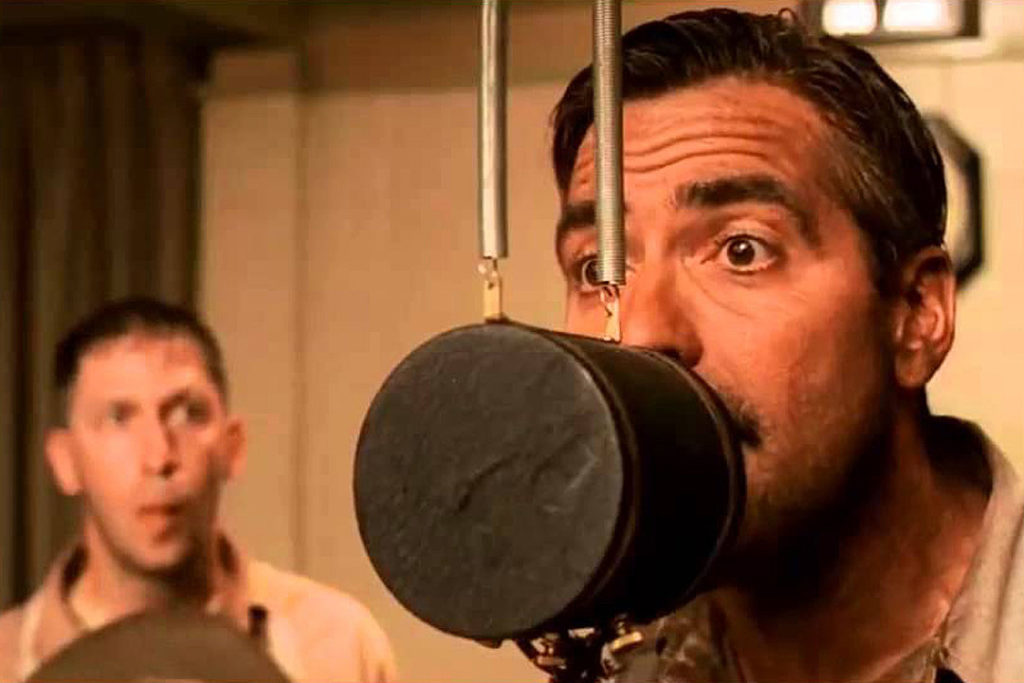
In this video, Mike Hedding shows us how to play the Man of Constant Sorrow (also known as ‘I am a Man of Constant Sorrow’). The song was first published by Dick Burnett in 1913 and has been covered by dozens of artists including Bob Dylan.
In 2002, it won the Grammy for Best Country Collaboration after being featured in the 2000 film ‘O Brother, Where Art Thou?’ soundtrack.
Check out our free Mandolin Tabs resource and our Mandolin Jokes and Memes




Video Text:
0:00:05.4 –>
on two three four one two three [Music] [Music] all right one of their mandolin land Mike Hedding here today I’m going to break down two solos to the classic bluegrass song man of constant sorrow the song was originally done in the key of F but I moved it up to the key of G to make it a little more friendly for beginners maybe a little bit more jam friendly I got two solos one a very basic version and the second sole is going to work on adding some basic bluegrass ornaments so we’re going to add some double stops some slides and some drone strings I’m going to break down both solos note for note and then
0:01:00.7 –>
show you a bunch of backup stuff you can do on this song so how you do basic two finger chords how do you do bluegrass chop chords to the song I’m gonna break it all down all right here we go here’s man of constant sorrow in the key of G all right let’s start breaking down this beginner version to man of constant sorrow let me play the first four measures and then I’ll break it down [Music] let’s do that a couple times on one more time so start by looking at the left hand fingers we should use for this song so we’re gonna use our ring finger of our left hand up on the fifth fret of the d-string so any of the fives on this song any fifth fret we’re going to use
0:02:00.6 –>
our third finger on this song any of the third frets when they’re on the a string D string or east ring we’re going to use our middle finger of our left hand and any of the ones we’re going to use our index finger of our left hand so let’s just go up on the a string to start and practice doing those three notes first fret third fret and fifth fret and what I want you to practice is keeping all your left hand down if you can see I’m not lifting these ones up when I put the next one down that’d really help you have practice stretching and a lot of times in this song we’re going to be going back to those notes so don’t lift them up because you’re gonna be going right back to those so practice that at first and that way take a little bit of time if you’re a beginner just practice stretching out then I’m going down to the D string you can do the third fret [Music]
0:03:00.7 –>
now I’m gonna go up to the E string [Applause] and we’re not going to use all those notes in this song but that’s just good practice stretching so it’s one’s threes and fives those are my frets 1st fret 3rd fret and 5th fret and I’m using fingers 1 2 3 index middle and ring finger of my left hand ok so let’s stick to that rule on this song and that’ll make playing the song a lot easier ok so let’s look at the pick up to the song so we’re gonna start on the 5th fret of the D string on beat 2 so I recommend counting beat 1 and then we’re gonna do 3 down strokes we’re gonna play the 5th fret on the D string 1st fret on the a string and then 3rd fret on the a string so it’s 2 3 4 3 quarter notes and row after beat 1 1 2 3 4 that’s kind of our tempo setter it’s almost similar to like you know when a rock band the drummer hits 1 2 3 with their sticks that’s basically what we’re
0:04:01.4 –>
doing here we’re setting the tempo of the song it’s not actually part of the melody in this case we’re just using that to basically set the tempo of our solo so we’re going 1 2 3 4 remember keep your left hand down if you can then we’re gonna go up to the 5th fret of the a string and do some down and up picking so we’re gonna hit the B 1 as a quarter note and then we’re gonna do down ups the rest of the measure so 2 & 3 & 4 & so six down ups so you do do that a couple times [Music] it’s a quarter note on b1 so 1 1 2 & 3 & 4 & now measure 3 we’re going to do 4 quarter notes back down those same notes fifth fret twice and then back to the
0:05:00.4 –>
fifth fret on the d-string and we’re gonna do down down up down and one more down up kind of a fiddle shuffle rhythm there we went down down down down that’s a good way to fill out a measure same with measure two the melody is just a really that long note on the fifth fret and we’re filling that up with some down and up picking to basically fill up that melody a little bit more so let’s play those first four measures one student one more time one I recommend following the pick directions below the tab the staples are downs and the V’s are ups um those downstroke especially in measure 3
0:06:02.4 –>
will actually help you play that timing help you slow you down a little bit there so you don’t do it too fast okay one more time one [Music] here’s measure five we’re gonna hit that fifth fret on the d-string one more time we’re new four quarter notes so fifth fret third fret up on the a string with your second finger first fret on the a string and then back to that fifth fret keep that fifth fret down the whole time if you can if you have to lift it up you can as well but it’d be good practice to keep that down you have to lift it up a little bit that’s okay can use the down strokes there to UM slow yourself down make sure you don’t play those too fast so let’s do four and five together so it’s now measure six back to that third
0:07:02.9 –>
fret on the a-string and we’re gonna do that down down up picking again so same timing as measured to so it’s one two and three and four and let’s do that a couple times one two and three and four and one more one two and three and four and then four quarter notes again third fret on the a string up to the fifth fret on the a string and then first fret on the high E twice so measure seven sounds like this [Music] one more time let’s play six and seven together so it’s now a measure eight back to the fifth fret on the a string and then we’re gonna do that down up picking same as measure two same exact timing and notes so one two and three
0:08:04.7 –>
and four and so remember what we’re doing there is filling up that melody it’s a long note and we’re filling it up with down and up picking so then measure nine you
Mandolin Articles
Common Problems with Mandolins
Ibanez Mandolin Models
How to Tune a Mandolin
How to Convert Guitar Tabs to Mandolin Tabs
10 Movies That Feature The Mandolin
10 Best Mandolin Podcasts
